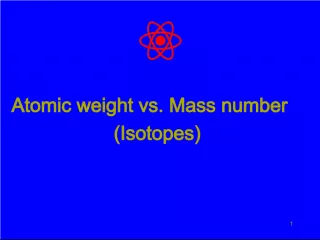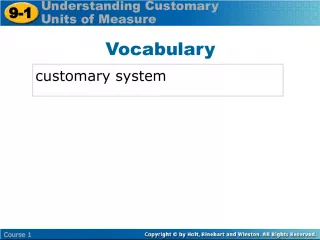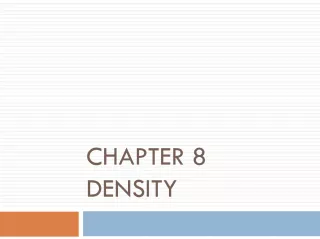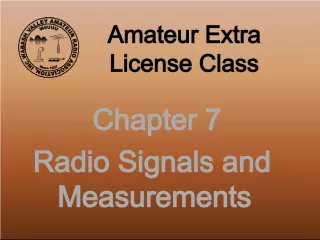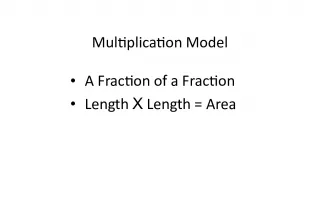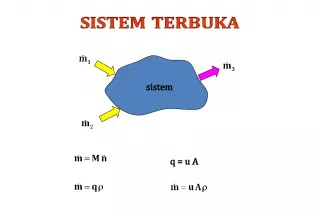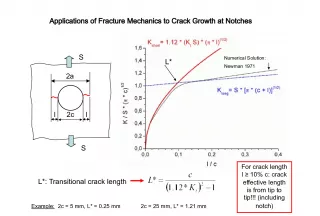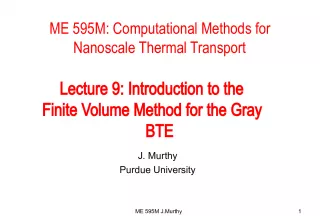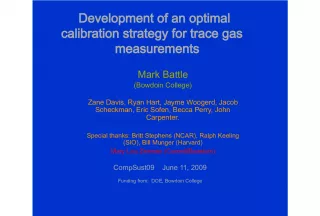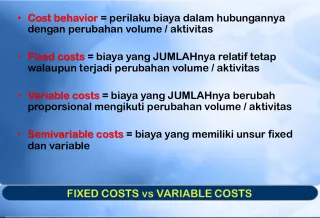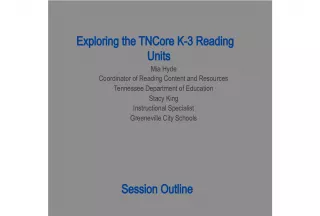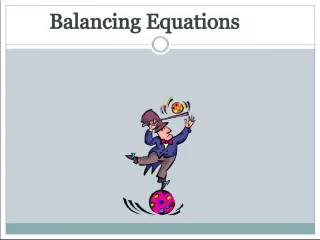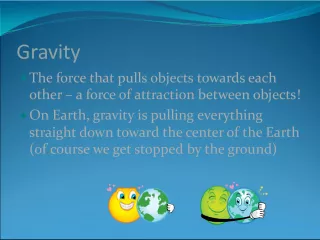Understanding Measurements: Volume, Mass, and Length Units
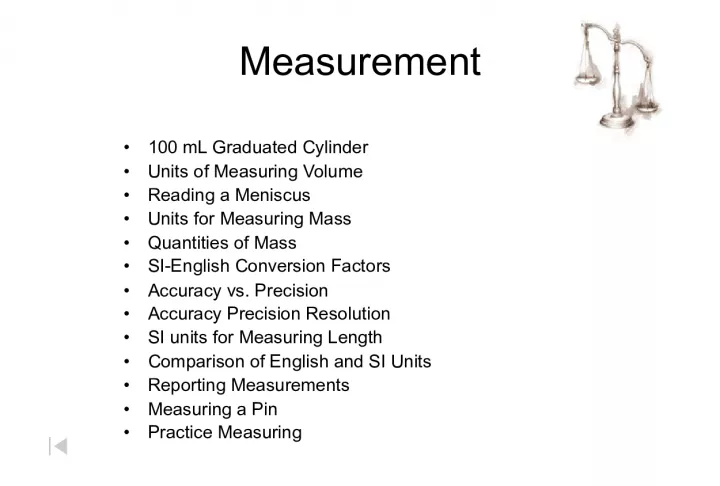

This article presents an in-depth overview of measurement concepts, including volume, mass, and length units. It covers essential information such as reading a meniscus, conversion factors between
- Uploaded on | 3 Views
-
 brad
brad
About Understanding Measurements: Volume, Mass, and Length Units
PowerPoint presentation about 'Understanding Measurements: Volume, Mass, and Length Units'. This presentation describes the topic on This article presents an in-depth overview of measurement concepts, including volume, mass, and length units. It covers essential information such as reading a meniscus, conversion factors between. The key topics included in this slideshow are . Download this presentation absolutely free.
Presentation Transcript
Slide1Measurement• 100 mL Graduated Cylinder • Units of Measuring Volume • Reading a Meniscus • Units for Measuring Mass • Quantities of Mass • SI-English Conversion Factors • Accuracy vs. Precision • Accuracy Precision Resolution • SI units for Measuring Length • Comparison of English and SI Units • Reporting Measurements • Measuring a Pin • Practice Measuring
Slide2Measurement• 100 mL Graduated Cylinder • Units of Measuring Volume • Reading a Meniscus • Units for Measuring Mass • Quantities of Mass • SI-English Conversion Factors • Accuracy vs. Precision • Accuracy Precision Resolution • SI units for Measuring Length • Comparison of English and SI Units • Reporting Measurements • Measuring a Pin • Practice Measuring
Slide3100 mLGraduated Cylinder Zumdahl, Zumdahl, DeCoste, World of Chemistry 2002, page 119
Slide4Instruments for Measuring VolumeGraduated cylinder Syringe Volumetric flask Buret Pipet
Slide5Units of Measuring Volume1 L = 1000 mL 1 qt = 946 mL Timberlake, Chemistry 7 th Edition, page 3
Slide6Reading a Meniscus10 8 6 line of sight too high reading too low reading too high line of sight too low proper line of sight reading correct graduated cylinder 10 mL
Slide7Units for Measuring Mass1 kg = 2.20 lb Timberlake, Chemistry 7 th Edition, page 3
Slide8Christopherson ScalesMade in Normal, Illinois USA Units for Measuring Mass 1 kg = 2.20 lb 1 kg (1000 g) 1 lb 1 lb 0.20 lb
Slide9Quantities ofMass Kelter, Carr, Scott, Chemistry A Wolrd of Choices 1999, page 25 Earth’s atmosphere to 2500 km Ocean liner Indian elephant Average human 1.0 liter of water Grain of table salt Typical protein Uranium atom Water molecule 10 24 g 10 21 g 10 18 g 10 15 g 10 12 g 10 9 g 10 6 g 10 3 g 10 0 g 10 -3 g 10 -6 g 10 -9 g 10 -12 g 10 -15 g 10 -18 g 10 -21 g 10 -24 g Giga- Mega- Kilo- Kilo- base milli- milli- micro- nano- pico- femto- atomo-
Slide10 factor name symbol factor Name Symbol10 -1 decimeter dm 10 1 decameter dam 10 -2 centimeter cm 10 2 hectometer hm 10 -3 millimeter mm 10 3 kilometer km 10 -6 micrometer m 10 6 megameter Mm 10 -9 nanometer nm 10 9 gigameter Gm 10 -12 picometer pm 10 12 terameter Tm 10 -15 femtometer fm 10 15 petameter Pm 10 -18 attometer am 10 18 exameter Em 10 -21 zeptometer zm 10 21 zettameter Zm 10 -24 yoctometer ym 10 24 yottameter Ym
Slide11Scientific Notation: Powers of TenRules for writing numbers in scientific notation: Write all significant figures but only the significant figures. Place the decimal point after the first digit, making the number have a value between 1 and 10. Use the correct power of ten to place the decimal point properly, as indicated below. a) Positive exponents push the decimal point to the right. The number becomes larger. It is multiplied by the power of 10. b) Negative exponents push the decimal point to the left. The number becomes smaller. It is divided by the power of 10. c) 10 o = 1 Examples: 3400 = 3.20 x 103 0.0120 = 1.20 x 10-2 Nice visual display of Powers of Ten ( a view from outer space to the inside of an atom ) viewed by powers of 10!
Slide12Multiples of bytes as defined by IEC 60027-2 SI prefix Binary prefixes Name Symbol Multiple Name Sy mb ol Multiple kilobyte kB 10 3 (or 2 10 ) kibibyte KiB 2 10 megabyte MB 10 6 (or 2 20 ) mebibyte MiB 2 20 gigabyte GB 10 9 (or 2 30 ) gibibyte GiB 2 30 terabyte TB 10 12 (or 2 40 ) tebibyte TiB 2 40 petabyte PB 10 15 (or 2 50 ) pebibyte PiB 2 50 exabyte EB 10 18 (or 2 60 ) exbibyte EiB 2 60 zettabyte ZB 10 21 (or 2 70 ) yottabyte YB 10 24 (or 2 80 ) A yottabyte (derived from the SI prefix )
Slide13Metric ArticleKeys Keys Metric Article ( questions ) Metric Article (questions) http://www.unit5.org/chemistry/intro.html
Slide14SI-US Conversion FactorsRelationship Conversion Factors Length Volume Mass 2.54 cm = 1 in. 1 m = 39.4 in. 946 mL = 1 qt 1 L = 1.06 qt 454 g = 1 lb 1 kg = 2.20 lb 1 in 2.54 cm 39.4 in 1 m 1 m 39.4 in. 946 mL 1 qt 1 qt 946 mL 1.06 qt 1 L 1 L 1.06 qt 454 g 1 lb 1 lb 454 g 2.20 lb 1 kg 1 kg 2.20 lb 2.54 cm 1 in and and and and and and
Slide15Accuracy vs. PrecisionRandom errors: reduce precision Good accuracy Good precision Poor accuracy Good precision Poor accuracy Poor precision Systematic errors: reduce accuracy (person) (instrument)
Slide16Accuracy vs. PrecisionRandom errors: reduce precision Good accuracy Good precision Poor accuracy Good precision Poor accuracy Poor precision Systematic errors: reduce accuracy
Slide17 Precision Accuracy reproducibility check by repeating measurements poor precision results from poor technique correctness check by using a different method poor accuracy results from procedural or equipment flaws.
Slide18Types of errorsSystematic • Instrument not ‘zeroed’ properly • Reagents made at wrong concentration Random • Temperature in room varies ‘wildly’ • Person running test is not properly trained
Slide19ErrorsSystematic Errors in a single direction (high or low) Can be corrected by proper calibration or running controls and blanks. Random Errors in any direction. Can’t be corrected. Can only be accounted for by using statistics.
Slide20Accuracy Precision Resolutionsubsequent samples time offset [arbitrary units] not accurate, not precise accurate, not precise not accurate, precise accurate and precise accurate, low resolution -2 -3 -1 0 1 2 3
Slide21Accuracy Precision Resolutionsubsequent samples time offset [arbitrary units] not accurate, not precise accurate, not precise not accurate, precise accurate and precise accurate, low resolution -2 -3 -1 0 1 2 3
Slide22Standard DeviationThe standard deviation, SD, is a precision estimate based on the area score: where x i is the i - th measurement x is the average measurement N is the number of measurements. y 0 x • One standard deviation away from the mean in either direction on the horizontal axis (the red area on the graph) accounts for around 68 percent of the people in this group. • Two standard deviations away from the mean (the red and green areas) account for roughly 95 percent of the people. • Three standard deviations (the red, green and blue areas) account for about 99 percent of the people.
Slide23SI Prefixeskilo- 1000 deci- 1 / 10 centi- 1 / 100 milli- 1 / 1000 Also know… 1 mL = 1 cm 3 and 1 L = 1 dm 3
Slide24SI System for Measuring Length Unit Symbol Meter Equivalent _______________________________________________________________________ kilometer km 1,000 m or 10 3 m meter m 1 m or 10 0 m decimeter dm 0.1 m or 10 -1 m centimeter cm 0.01 m or 10 -2 m millimeter mm 0.001 m or 10 -3 m micrometer m 0.000001 m or 10 -6 m nanometer nm 0.000000001 m or 10 -9 m The SI Units for Measuring Length Zumdahl, Zumdahl, DeCoste, World of Chemistry 2002, page 118
Slide25Comparison of English andSI Units 1 inch 2.54 cm 1 inch = 2.54 cm Zumdahl, Zumdahl, DeCoste, World of Chemistry 2002, page 119
Slide26Reporting Measurements• Using significant figures • Report what is known with certainty • Add ONE digit of uncertainty (estimation) Davis, Metcalfe, Williams, Castka, Modern Chemistry , 1999, page 46
Slide27Measuring a PinZumdahl, Zumdahl, DeCoste, World of Chemistry 2002, page 122
Slide28Practice Measuring4 . 5 c m 4.54 cm 3.0 cm Timberlake, Chemistry 7 th Edition, page 7 cm 0 1 2 3 4 5 cm 0 1 2 3 4 5 cm 0 1 2 3 4 5
Slide29Implied Range of Uncertainty5 6 4 3 Implied range of uncertainty in a measurement reported as 5 cm. 5 6 4 3 Implied range of uncertainty in a measurement reported as 5.0 cm. Dorin, Demmin, Gabel, Chemistry The Study of Matter 3rd Edition, page 32 5 6 4 3 Implied range of uncertainty in a measurement reported as 5.00 cm.
Slide302010 ? 1 5 m L ? 15.0 mL 1.50 x 10 1 mL
Slide31Reading a VernierA Vernier allows a precise reading of some value. In the figure to the left, the Vernier moves up and down to measure a position on the scale. This could be part of a barometer which reads atmospheric pressure. The "pointer" is the line on the vernier labeled "0". Thus the measured position is almost exactly 756 in whatever units the scale is calibrated in. If you look closely you will see that the distance between the divisions on the vernier are not the same as the divisions on the scale. The 0 line on the vernier lines up at 756 on the scale, but the 10 line on the vernier lines up at 765 on the scale. Thus the distance between the divisions on the vernier are 90% of the distance between the divisions on the scale. http://www.upscale.utoronto.ca/PVB/Harrison/Vernier/Vernier.html 756
Slide32Reading a VernierA Vernier allows a precise reading of some value. In the figure to the left, the Vernier moves up and down to measure a position on the scale. This could be part of a barometer which reads atmospheric pressure. The "pointer" is the line on the vernier labeled "0". Thus the measured position is almost exactly 756 in whatever units the scale is calibrated in. If you look closely you will see that the distance between the divisions on the vernier are not the same as the divisions on the scale. The 0 line on the vernier lines up at 756 on the scale, but the 10 line on the vernier lines up at 765 on the scale. Thus the distance between the divisions on the vernier are 90% of the distance between the divisions on the scale. 756 750 760 770 Scale 5 0 10 Vernier http://www.upscale.utoronto.ca/PVB/Harrison/Vernier/Vernier.html
Slide33If we do another reading with the vernier ata different position, the pointer, the line marked 0, may not line up exactly with one of the lines on the scale. Here the "pointer" lines up at approximately 746.5 on the scale. If you look you will see that only one line on the vernier lines up exactly with one of the lines on the scale, the 5 line. This means that our first guess was correct: the reading is 746.5. 5 0 10 750 740 760 W h a t i s t h e r e a d i n g n o w ? 741.9 http://www.upscale.utoronto.ca/PVB/Harrison/Vernier/Vernier.html
Slide34750740 760 If we do another reading with the vernier at a different position, the pointer, the line marked 0, may not line up exactly with one of the lines on the scale. Here the "pointer" lines up at approximately 746.5 on the scale. If you look you will see that only one line on the vernier lines up exactly with one of the lines on the scale, the 5 line. This means that our first guess was correct: the reading is 746.5. 5 0 10 W h a t i s t h e r e a d i n g n o w ? 756.0 http://www.upscale.utoronto.ca/PVB/Harrison/Vernier/Vernier.html
Slide35750740 760 Here is a final example, with the vernier at yet another position. The pointer points to a value that is obviously greater than 751.5 and also less than 752.0. Looking for divisions on the vernier that match a division on the scale, the 8 line matches fairly closely. So the reading is about 751.8. In fact, the 8 line on the vernier appears to be a little bit above the corresponding line on the scale. The 8 line on the vernier is clearly somewhat below the corresponding line of the scale. So with sharp eyes one might report this reading as 751.82 ± 0.02. This "reading error" of ± 0.02 is probably the correct error of precision to specify for all measurements done with this apparatus. 5 0 10 http://www.upscale.utoronto.ca/PVB/Harrison/Vernier/Vernier.html
Slide36How to Read a Thermometer(Celcius) 10 5 0 4.0 o C 10 5 0 8.3 o C 100 50 0 64 o C 5 0 3.5 o C
Slide370o C 10 o C 20 o C 30 o C 40 o C 50 o C 60 o C 0 o C 1 o C 2 o C 3 o C 4 o C 5 o C 6 o C 0 o C 5 o C 10 o C 15 o C 20 o C 25 o C 0 o C 20 o C 40 o C 60 o C 80 o C 100 o C 0 o C 20 o C 40 o C 60 o C 80 o C 100 o C Record the Temperature (Celcius) A A B B C C D D E E 30.0 o C 3.00 o C 19.0 o C 48 o C 60. o C
Slide38MeasurementsMeasurements Metric (SI) units Metric (SI) units Prefixes Prefixes Uncertainty Uncertainty Significant figures Significant figures Conversion factors Conversion factors Length Length Density Density Mass Mass Volume Volume Problem solving with conversion factors Problem solving with conversion factors Timberlake, Chemistry 7 th Edition, page 40
Slide39III III Using Measurements MEASUREMENT Courtesy Christy Johannesson www.nisd.net/communicationsarts/pages/chem
Slide40Accuracy vs. Precision Accuracy Accuracy - how close a measurement is to the accepted value Precision Precision - how close a series of measurements are to each other ACCURATE = Correct PRECISE = Consistent Courtesy Christy Johannesson www.nisd.net/communicationsarts/pages/chem
Slide41Percent Error Indicates accuracy of a measurement your value accepted value Courtesy Christy Johannesson www.nisd.net/communicationsarts/pages/chem
Slide42Percent Error A student determines the density of a substance to be 1.40 g/mL. Find the % error if the accepted value of the density is 1.36 g/mL. % error = 2.9 % Courtesy Christy Johannesson www.nisd.net/communicationsarts/pages/chem
Slide43Significant Figures Indicate precision of a measurement. Recording Sig Figs Sig figs in a measurement include the known digits plus a final estimated digit 2.35 cm Courtesy Christy Johannesson www.nisd.net/communicationsarts/pages/chem
Slide44Significant Figures Counting Sig Figs (Table 2-5, p.47) Count all numbers EXCEPT: Leading zeros -- 0.00 25 Trailing zeros without a decimal point -- 2,5 00 Courtesy Christy Johannesson www.nisd.net/communicationsarts/pages/chem
Slide454. 0.0803. 5,280 2. 402 1. 23.50 Significant Figures Counting Sig Fig Examples 1. 23.50 2. 402 3. 5,28 0 4. 0.0 80 4 sig figs 3 sig figs 3 sig figs 2 sig figs Courtesy Christy Johannesson www.nisd.net/communicationsarts/pages/chem
Slide46Significant Figures Calculating with Sig Figs Multiply/Divide - The # with the fewest sig figs determines the # of sig figs in the answer. (13.91g/cm 3 )(23.3cm 3 ) = 324.103g 324 g 4 SF 3 SF 3 SF Courtesy Christy Johannesson www.nisd.net/communicationsarts/pages/chem
Slide47Significant Figures Calculating with Sig Figs (con’t) Add/Subtract - The # with the lowest decimal value determines the place of the last sig fig in the answer. 3.75 mL + 4.1 mL 7.85 mL 224 g + 130 g 354 g 7.9 mL 350 g 3.7 5 mL + 4. 1 mL 7.85 mL 22 4 g + 1 3 0 g 354 g Courtesy Christy Johannesson www.nisd.net/communicationsarts/pages/chem
Slide48Significant Figures Calculating with Sig Figs (con’t) Exact Numbers do not limit the # of sig figs in the answer. Counting numbers: 12 students Exact conversions: 1 m = 100 cm “1” in any conversion: 1 in = 2.54 cm Courtesy Christy Johannesson www.nisd.net/communicationsarts/pages/chem
Slide49Significant Figures5. (15.30 g) ÷ (6.4 mL) Practice Problems = 2.390625 g/mL 18.1 g 6. 18.9 g - 0.84 g 18.06 g 4 SF 2 SF 2.4 g/mL 2 SF Courtesy Christy Johannesson www.nisd.net/communicationsarts/pages/chem
Slide50Scientific Notation Converting into scientific notation: Move decimal until there’s 1 digit to its left. Places moved = exponent. Large # (>1) positive exponent Small # (<1) negative exponent Only include sig. figs. 65,000 kg 6.5 × 10 4 kg Courtesy Christy Johannesson www.nisd.net/communicationsarts/pages/chem
Slide51Scientific Notation7. 2,400,000 g 8. 0.00256 kg 9. 7 10 -5 km 10. 6.2 10 4 mm Practice Problems 2.4 10 6 g 2.56 10 -3 kg 0.00007 km 62,000 mm Courtesy Christy Johannesson www.nisd.net/communicationsarts/pages/chem
Slide52Scientific Notation Calculating with scientific notation (5.44 × 10 7 g) ÷ (8.1 × 10 4 mol) = 5.44 EXP EXP EE EE ÷ ÷ EXP EXP EE EE ENTER ENTER EXE EXE 7 8.1 4 = 671.6049383 = 670 g/mol = 6.7 × 10 2 g/mol Type on your calculator: Courtesy Christy Johannesson www.nisd.net/communicationsarts/pages/chem
Slide53Proportions Direct Proportion Inverse Proportion y x y x Courtesy Christy Johannesson www.nisd.net/communicationsarts/pages/chem
Slide54Reviewing ConceptsMeasurement • Why do scientists use scientific notation? • What system of units do scientists use for measurements? • How does the precision of measurements affect the precision of scientific calculations? • List the SI units for mass, length, and temperature.
Slide55 Rules for Counting Significant Figures1 . N o n z e r o i n t e g e r s a l w a y s c o u n t a s s i g n i f i c a n t f i g u r e s . 2 . Z e r o s : T h e r e a r e t h r e e c l a s s e s o f z e r o e s . a. L e a d i n g z e r o e s p r e c e d e a l l t h e n o n z e r o d i g i t s a n d D O N O T c o u n t a s s i g n i f i c a n t f i g u r e s . E x a m p l e : 0 . 0 0 2 5 h a s _ _ _ _ s i g n i f i c a n t f i g u r e s . b. C a p t i v e z e r o e s a r e z e r o e s b e t w e e n n o n z e r o n u m b e r s . T h e s e a l w a y s c o u n t a s s i g n i f i c a n t f i g u r e s . E x a m p l e : 1 . 0 0 8 h a s _ _ _ _ s i g n i f i c a n t f i g u r e s . c. T r a i l i n g z e r o e s a r e z e r o e s a t t h e r i g h t e n d o f t h e n u m b e r . T r a i l i n g z e r o e s a r e o n l y s i g n i f i c a n t i f t h e n u m b e r c o n t a i n s a d e c i m a l p o i n t . E x a m p l e : 1 . 0 0 x 1 0 2 h a s _ _ _ _ s i g n i f i c a n t f i g u r e s . T r a i l i n g z e r o e s a r e n o t s i g n i f i c a n t i f t h e n u m b e r d o e s n o t c o n t a i n a d e c i m a l p o i n t . E x a m p l e : 1 0 0 h a s _ _ _ _ s i g n i f i c a n t f i g u r e . 3. E x a c t n u m b e r s , w h i c h c a n a r i s e f r o m c o u n t i n g o r d e f i n i t i o n s s u c h a s 1 i n = 2 . 5 4 c m , n e v e r l i m i t t h e n u m b e r o f s i g n i f i c a n t f i g u r e s i n a c a l c u l a t i o n . 2 4 3 1 Ohn-Sabatello, Morlan, Knoespel, Fast Track to a 5 Preparing for the AP Chemistry Examination 2006, page 53
Slide56Significant figures: Rules for zerosLeading zeros are not significant. Captive zeros are significant. Trailing zeros are significant. Leading zero Leading zero Captive zero Captive zero Trailing zero Trailing zero 0 . 4 2 1 4 0 1 2 1 1 4 . 2 0 – three significant figures – four significant figures – five significant figures
Slide57Significant DigitsKeys Keys Significant Digits Significant Digits http://www.unit5.org/chemistry/intro.html
Slide58How to pick a lab partner?
